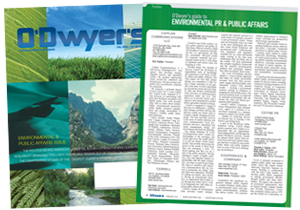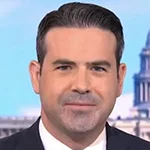 For those of us who aren’t lawyers, there’s little fun about a lawsuit. It generally involves costly legal fees, time away from work and potential damage to the brand equity we’ve painstakingly built. Compounding all of this is counsels’ common initial reaction to say and do nothing. It’s enough to drive communicators up a wall. Fortunately, that first “no” doesn’t have to be the last word.
For those of us who aren’t lawyers, there’s little fun about a lawsuit. It generally involves costly legal fees, time away from work and potential damage to the brand equity we’ve painstakingly built. Compounding all of this is counsels’ common initial reaction to say and do nothing. It’s enough to drive communicators up a wall. Fortunately, that first “no” doesn’t have to be the last word.
Let’s face it, when you’re the one filing the lawsuit, it’s much easier to show counsel the benefits of deploying a cohesive public affairs and public relations program. When you’re the plaintiff, you’re essentially in the driver’s seat; you know your story, you know your end goal and you know what you’re willing to settle for. Going through court might not be the quickest way of achieving your goals, but if you deploy a targeted campaign to put pressure on your key audience you might be able to advance your agenda more quickly. Avoid looking petty or overly aggressive when you’re suing.
|
|
As communicators, we all know the last thing we want to be is on defense. However, when you’re in court, at least one party is defending itself. The key is avoiding the perception that you’re on the defensive. When you’re trying to communicate during a defense case, it’s all about looking for the opportunities to be proactive and strategic in working with the media and employing advocacy that bolsters your case.
Despite differences in approach, the baseline reality is that strategic communications and public affairs can have a major impact on the outcome of litigation and can be a positive complement to a lawsuit. So, how to make it look effortless and convince counsel that it’s the right thing to do?
Avoiding plaintiff perceptions
Owen’s Lake is located in the Sierra Mountains in California; it’s a small community that once was home to a robust lake. One hundred years ago, the City of Los Angeles claimed rights to that lake and began to divert it through an aqueduct to quench the thirst of Angelenos some 400 miles away. The result is that the lake was drained and a fine dust particulate was consistently whipped into the air — causing a variety of health and environmental problems.
While there have been attempts by the Los Angeles Department of Water and Power (LADWP) to mitigate the problem over the past three decades, the real solution only came through a cohesive strategy that involved litigation and public education. Under the leadership of the local air regulator, Ted Schade, the region proactively launched a series of ongoing lawsuits against the LADWP.
While the lawsuits were important, their greatest value was in providing a platform to regularly engage media and start a conversation that reached the target audience in L.A. Schade used every legal milestone to work with the media and educate LADWP ratepayers in L.A. and to reach local elected leaders. For example, in December of 2012, after winning legal fees in the case from LADWP, Schade did a round of media interviews with L.A.-based media about the decision and outlined opportunities for LADWP to move past the issues.
While LADWP launched legal counterattacks over the years, Schade stayed consistent in his approach and message. His message framed the litigation in a context that was easily understood. He didn’t come off as a bitter plaintiff, but rather an underdog fighting to correct a historical environmental injustice. Ultimately, his message resonated with Mayor Eric Garcetti and a landmark agreement was reached in 2014. However, had Schade failed to integrate a proactive public relations and public affairs strategy, this highly complex and lengthy litigation would have been largely ignored.
Making defense a positive position
A few years ago, my firm was tasked with finding a way to help a small water district develop a public relations and public affairs strategy that would bolster its defense. In this case, it was important not only to tell the story strategically in the media, but also to advocate with elected leaders who could effectuate a settlement.
In evaluating the case, a few things stood out. First, the facts were extremely complicated: the fight was over who had the rights to a small amount of water that was by the local water district for a community of 4,000 people. Secondly, the plaintiff had a poor reputation and lacked credibility. Finally, these were two public entities — one was massive and the other one of the smallest in California. We had a frame — a goliath public agency taking on a small community that depended upon this water for its very existence. Our strategy took out the complex legal maneuvering and presented it as an age-old underdog story.
Framing the issue
For lawyers, there’s usually one question: does engaging in a public relations and public affairs effort have the potential to derail our case? It’s a pretty obvious and correct question for counsel to be raising, and, as communicators, it’s our job to demonstrate the value of a smart communication effort.
So, what are the steps to getting there?
Outline the facts. Create a clear and consistent set of facts, both as reported and as discussed with counsel. Place them in a narrative framework that shows how you’d tell the story.
Identify the audience. Sometimes, it’s as basic as protecting a brand from damage in the media; other times it might be about reaching regulators who can help strike a deal. Make sure you know the right audiences and detail how/why they need to be communicated with.
Detail the pitfalls. Present an honest inventory of the strengths, weaknesses, opportunities and threats of deploying a proactive public affairs and communications strategy, both from a communications and legal perspective.
Develop a consensus strategy. Successful organizations know that legal and communications can’t work independently — rather they need to have a healthy give and take and build consensus. Communicators need to bring the lawyers to the table — they need to develop and agree to strategies together to work.
Lawyers, like communicators, know the value of facts and telling a story with them. For communicators, it’s about working with counsel and laying out the facts regarding how a particular strategy will not only support them in court, but is in the best interest of their client. Granted, it’s a task easier said than done. However, when counsel and communicators work together, clients ultimately win.
* * *
Sean Rossall is Vice President of Cerrell Associates.



 Husch Blackwell Strategies has added FleishmanHillard alum Michael Slatin as a principal in its public affairs group.
Husch Blackwell Strategies has added FleishmanHillard alum Michael Slatin as a principal in its public affairs group. Rory Cooper, a veteran Republican operative and policy specialist, has joined Teneo’s Washington office as senior managing director in its strategy & communications practice.
Rory Cooper, a veteran Republican operative and policy specialist, has joined Teneo’s Washington office as senior managing director in its strategy & communications practice. Brian Fallon, who served as national press secretary for Hillary Clinton’s 2016 presidential run, is signing on next month as Vice President’s Kamala Harris’ campaign communications director.
Brian Fallon, who served as national press secretary for Hillary Clinton’s 2016 presidential run, is signing on next month as Vice President’s Kamala Harris’ campaign communications director. TikTok is nothing more than a Chinese propaganda tool that poses “a grave threat to America’s national security and, in particular, impressionable children and young adults,” say two Congressmen who want the platform registered as a foreign agent.
TikTok is nothing more than a Chinese propaganda tool that poses “a grave threat to America’s national security and, in particular, impressionable children and young adults,” say two Congressmen who want the platform registered as a foreign agent. Public Strategies Washington has added Abbie Sorrendino, a former aide to now Senate Majority Leader Chuck Schumer.
Public Strategies Washington has added Abbie Sorrendino, a former aide to now Senate Majority Leader Chuck Schumer.


 Have a comment? Send it to
Have a comment? Send it to 
No comments have been submitted for this story yet.